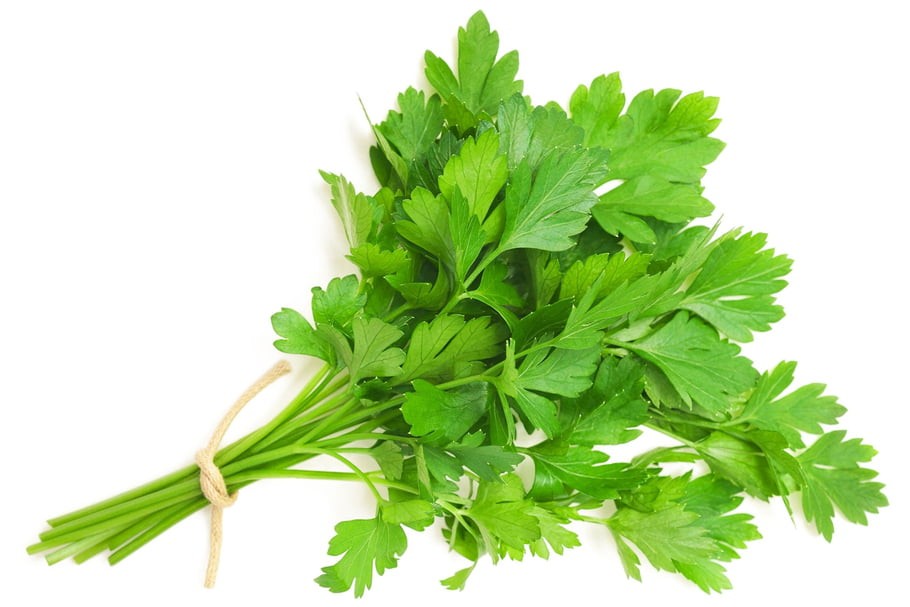Parsley is considered a real health bomb. Recent research has shown that parsley is considered one of the three best medicinal herbs (along with garlic and nettle). Despite all this, few people eat parsley like this alone, and those who do often use parsley to freshen the mouth, especially after eating a heavy meal or eating garlic. In addition to other benefits, which include:
1- Beneficial for the health of the digestive system and liver
Eating parsley daily helps support digestive health, partly due to its role in supporting the liver.
It increases levels of the main antioxidant glutathione in the liver and also supports other antioxidant enzymes.
It has been proven that parsley can regenerate liver tissue after damage caused by chronic diseases.
2- Reduces blood sugar levels
Parsley has been shown to lower blood glucose levels in various studies.
It is used as an alternative treatment for type 1 diabetes in some countries.
3- Improves body odor
Parsley is rich in chlorophyll, which gives the body a beautiful scent and is considered a breath freshener.
Chlorophyll acts as an antimutagenic agent and reduces odor-causing bacteria responsible for producing bad breath and body odor. Parsley works to reduce body odor.
4- Lowers blood pressure
Parsley is also known to act as a diuretic and reduce blood pressure. It increases the excretion of sodium and water through the urine and increases the reabsorption of potassium in the kidneys. This is especially beneficial for anyone suffering from poor circulation, swelling, cellulite, and other cardiovascular problems.
5- Fights cancer
Fresh parsley leaves contain a variety of antioxidants, including flavonoids, carotenoids, ascorbic acid (vitamin C) and tocopherol. These components protect the body from free radicals, which are molecules that harm healthy cells and lead to the development of cancer.
Calcium is available in parsley to a degree that may exceed what is contained in milk for which it is famous, as we find in the milk liquid what they estimate to be one hundred and fifty (150) milligrams in every hundred cubic centimeters of it, while one hundred grams of parsley reaches 195 milligrams.
In addition to a high percentage of iron salts that reach 5 milligrams per hundred grams, and if we contemplate the composition of the liver, which is the richest circulating source of iron, we would find that it does not exceed eight milligrams only, while spinach is famous for containing no more than three of a type that is not suitable. To absorb and benefit.
What distinguishes parsley over others is the vitamin A and vitamin C it contains. The first of them (i.e. Vitamin A) we find in parsley an amount equivalent to 918 micrograms, an amount that exceeds the basic need of an adult human recommended by the World Health Organization, which sets the minimum at 750 micrograms. The richness of parsley in vitamin A exceeds only watercress, hibiscus, and carrots. It is preceded by the stages of liver synthesis, which reach seven thousand micrograms (7000) in every hundred grams of it.
As for what may be surprising, it is the vitamin C that parsley contains, which is the vitamin that prevents scurvy. What is contained in one hundred grams of fresh parsley is estimated at one hundred and eighty (180) milligrams, and this is an amount greater than what is contained in the same weight of oranges or lemons, which are famous for their meaning. An amount of parsley contains three times more vitamin C than an orange, while the daily human need for an adult man does not exceed thirty milligrams, according to the World Health Organization.
Perhaps the only condition is that it be fresh, because its vitamin content decreases to worthless amounts if it wilts
Next PostYou have visited 0 post(s)

